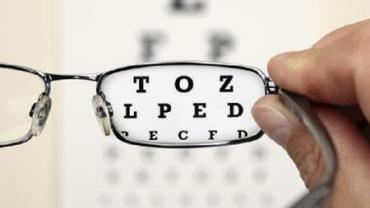
Does it seem like more children are wearing glasses these days than when you were a kid? And not just that but children are needing glasses at ever younger ages? It’s not your imagination. Myopia or nearsightedness—where close-up images are clear but faraway objects are blurry—can be added to the list of “diseases of civilization” brought about by lifestyles and diets that are a mismatch for the way our bodies—or in this case our eyes specifically—evolved.
In order to build and maintain a strong physique it’s important to work multiple muscle groups in order to create balance and symmetry. You can’t just focus on building your biceps and neglect your triceps; same with your quadriceps and hamstrings. Certain muscles will grow in size and strength at the expense of others. But this doesn’t just apply to skeletal muscle. “Use it or lose it” seems to apply to vision as well with myopia resulting from not using the far-focusing abilities of the eyes enough.
Just like the rest of the body the eyes need a “varied diet” in order to prevent imbalances. However the ubiquity of modern technology in the form of smartphones tablets advanced watches and other digital devices gives our eyes heaping doses of extended periods of time focusing on very small nearby images. As a result we may be becoming deficient in taking in sweeping vistas and wide open landscapes such as we might be exposed to with more time spent outdoors and in natural settings. The increased amount of time working ocular muscles that focus on close-up images comes at the expense of allowing the eyes to bring larger and more distant images into clear view.
Genetics and heredity play a role in development of myopia but researchers believe that compromises in eyesight might be similar to the development of obesity in that while genetics does have some influence the conditions tend to “run in families” because families engage in similar diet and lifestyle practices. In the case of myopia the lifestyle factor with the biggest influence is “near work” which includes using phones tablets and computers but also reading studying and memorizing.
Historical data shows that myopia was ten times more prevalent among students than in unskilled workers. Presumably the students were engaged in more near work in the form of reading and studying and this data was gathered before computers and smartphones even existed! More recent studies have confirmed that the prevalence of myopia is especially high in college students and the condition occurs much less frequently in less educated populations. It’s also telling to note that 5-year-old children from many countries and cultures have very few vision problems but myopia most often develops during school-going age. Myopia is also more prevalent in countries where formal education is the norm as opposed to those where it is more sporadic such as the low incidence in Nepal versus nearly 70% in China.
Aside from the increasing prevalence of “near work” as people gaze at their phones and other devices seemingly constantly another aspect of modern life that might contribute to the increasing prevalence of myopia is diet. The eyes are not immune to the detrimental effects of the endocrine and metabolic imbalances induced by overconsumption of carbohydrates. The connection between chronically high blood glucose and retinal damage is well established and hyperglycemia is correlated with incidence of myopia as well. The incidence of myopia among diabetics is higher than among non-diabetics and the risk for myopia is especially high among diabetics with elevated hemoglobin A1c.
Chronically elevated levels of insulin induce a cascade of endocrine signaling that may influence cellular proliferation and growth in the eye during childhood and adolescence leading to changes in the shape and structure of the eye itself which could result in myopia. Moreover diets that improve insulin sensitivity have been shown to slow the progression of myopia. Lending more weight to the idea that myopia might be another condition of modern civilization influenced as much by diet as by “near work” literate population groups with limited access to high-glycemic-load carbohydrates have low incidences of myopia whereas higher incidences are found in non-literate populations consuming typical western diets.
It seems that getting back to our evolutionary roots—spending more time outdoors in natural light gazing at wide open spaces—might be good eye medicine.
Sources